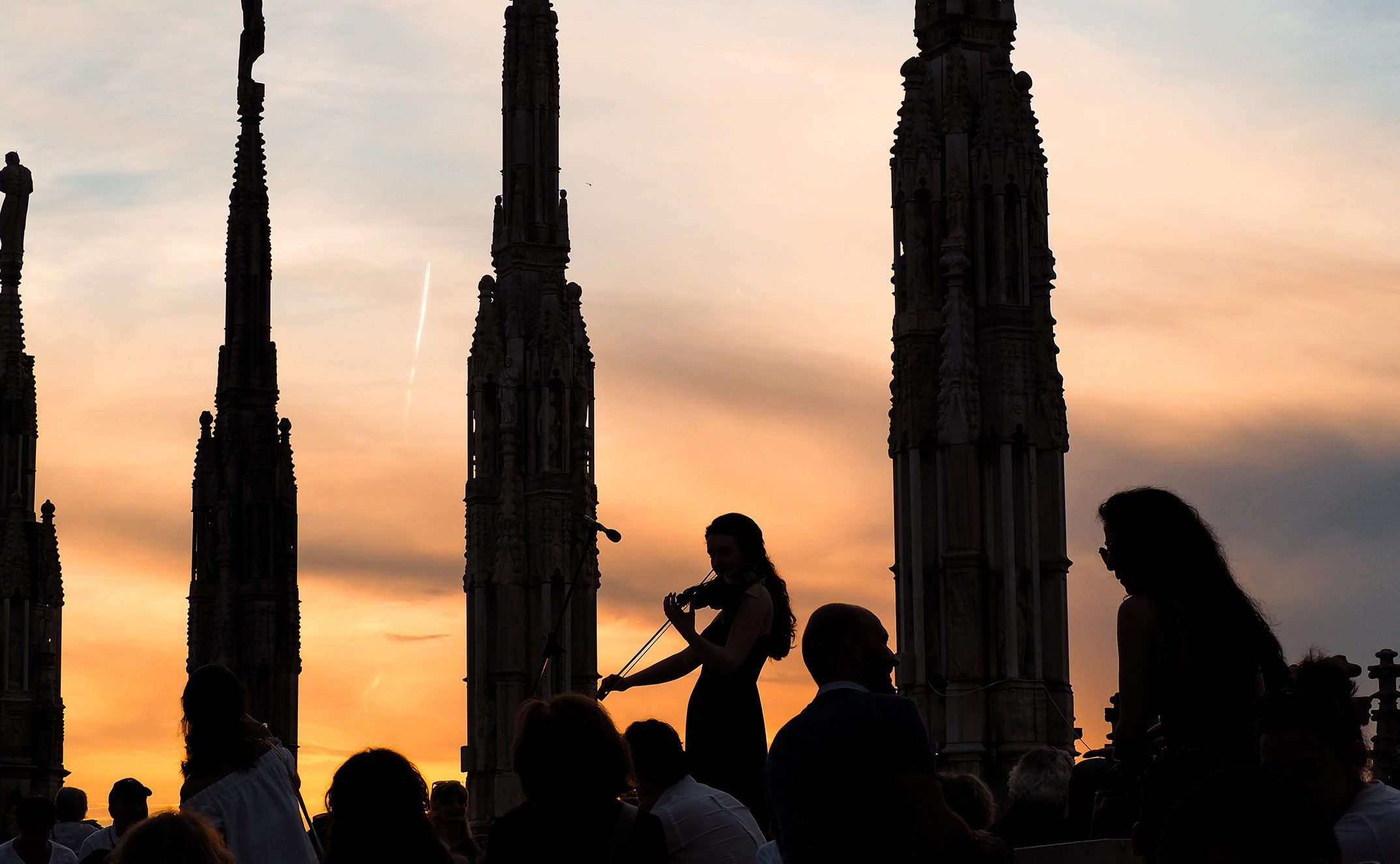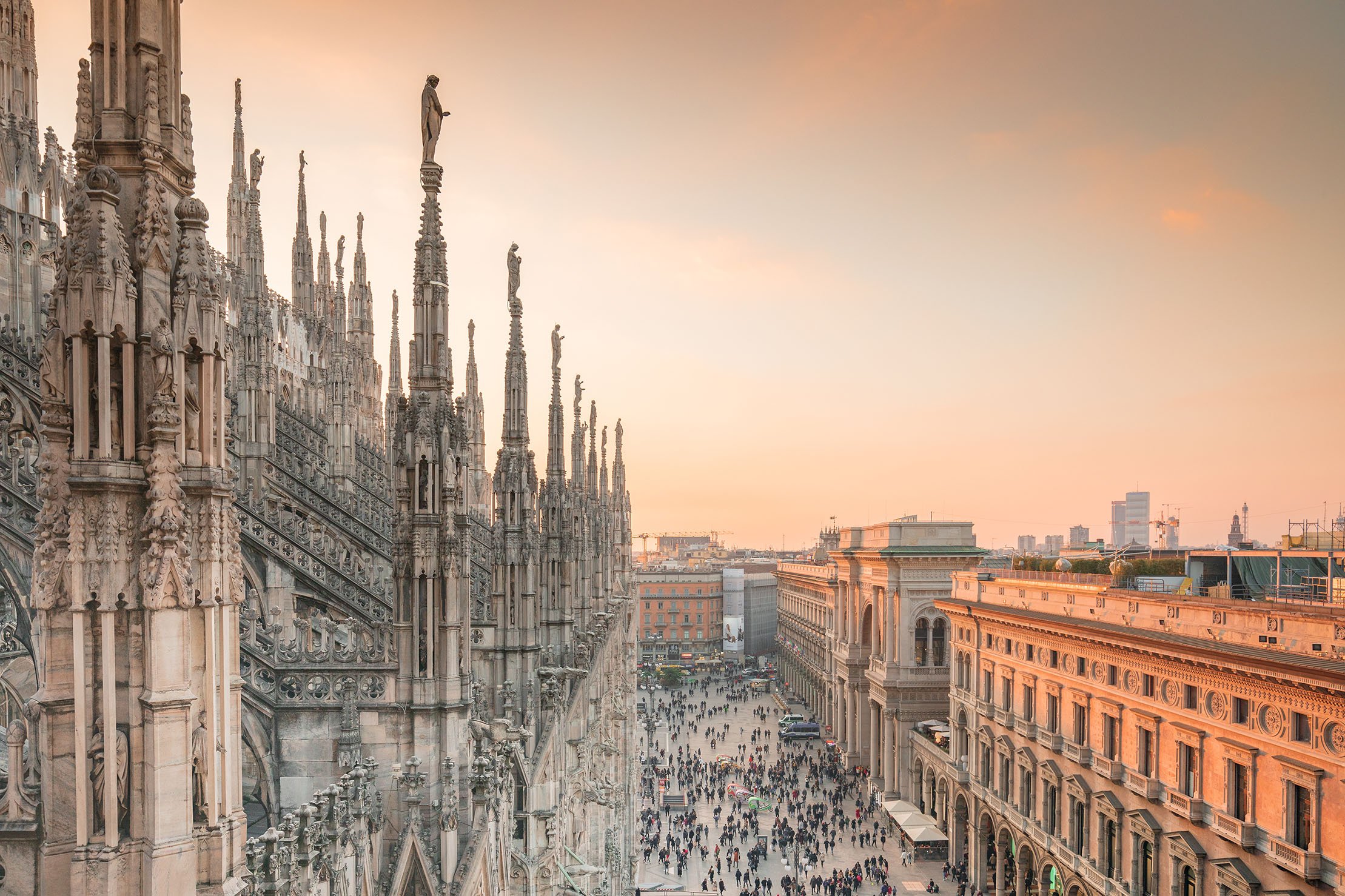The Metropolitan Chapter is the Presbyterium which has the responsibility of performing the liturgical services of the Cathedral.
The daily meeting of the Canons was originally called Capitulum as they would read a chapter (capitolo), that is, a brief exerpt of the rules which govern the canonical life. The name Capitulum would later come to be used to refer to the same college of the Canons.
Since 1 December 2012, the Archpriest of the Metropolitan Chapter is monsignor Gianantonio Borgonovo.
The term Chapter means the college of clergymen, commonly known as “canons”, who have the basic duty of attending to liturgical services in the Cathedral, the Bishop’s church. The daily assembly of the canons was in ancient times known as the capitulum because a chapter, that is a brief passage of the Rule which determined the duties of canonical life, was read out at it; subsequently the term capitulum was used to indicate the college of canons itself.
The Metropolitan Chapter is responsible for acting as a model in the celebrations, for preserving the Ambrosian Rite with its ancient and unique characteristics, for attending to the liturgical chant, for taking part in the celebrations presided by the Archbishop, and for presiding the daily celebrations of the Liturgy of the Hours.
Currently comprising twenty-one Ordinary Canons, the Metropolitan Chapter is ruled and governed by its own Charters approved by the Archbishop.
The Chapter was extremely important in the history of the Church in Milan and for a long time it was the most prominent ecclesiastic organisation with a structure that became increasingly more clear as time went by.
The Bishop was normally chosen from amongst its members, and he in turn could count on some of the canons as his most valid aids.
The procedure for appointment of canons was not always the same. Sometimes they were appointed by the Bishop, sometimes by the Chapter, other times by the Bishop and the Chapter jointly.In feudal times, above all, there were often interferences and even impositions on the part of the feudal lords and nobles with regard to nomination of canons.
The ordo maior (major order), subsequently also known as the “capitolo maggiore” (major chapter), was made up — with reference to the apostolic college — of twelve presbyters belonging to the most eminent families of the city who, together with the bishop, attended to ecclesiastic government, liturgical services in the two cathedrals — during winter in the church of Santa Maria Maggiore which Bishop Angilberto I had ordered to be built, and during the summer in the more majestic church of Santa Tecla.
The duty of the ordo minor (minor order) was to attend to worship in the summer cathedral at times when the cardinales celebrated services in the winter chapel and vice versa and to devote themselves to pastoral charge in the churches of the city, and it was composed of numerous presbyters — perhaps one hundred if we are to give credit to the expression “cento ferule” ( a ferula or staff was the insignia of pastoral office) — led by a primicerius who summoned them twice a month to the presbytery of the cathedral to instruct them and discuss the problems of pastoral life with them.
Coexistence between the two orders was not always easy, on the contrary strained relations and contrasts — above all between the archdeacon and the primicerium — continued for centuries with alternating phases of tolerance and inflexibility. Towards the end of the 13th century, there was a sort of lockout of the Chapter when Archbishop Ottone Visconti decided to restrict the possibility of appointment as cardinales only to those belonging to one of the almost two hundred families recorded in the roll of the nobility that he himself had ordered to be drawn up (1277).
The election of the Archbishop, then the exclusive responsibility of the Chapter, would thus have been “protected” from unwanted interferences.
Carlo Borromeo, within the framework of reforms that he promoted to implement the provisions of the Council of Trent, ordered a marked renewal of liturgical life in the Cathedral and a radical revision of the statutes of the Chapter.
He truly made the Duomo the heart of diocesan prayer; with his presence he offered a great example of prayer and zeal for the House of the Lord, above all to the canons who were somewhat negligent in the celebration of the divine officiation.
After the Borromean Reform, perfected by his successor Archbishop Gaspare Visconti, the Chapter took on its almost final structure and role. The years of the Cisalpine Republic proved difficult for the ecclesiastic institutions in that they led, amongst other things, to the abolition of the Chapter which would be re-established in 1802, after the Concordat reached between Pope Pius VII and Napoleon Bonaparte.
In the second half of the 19th century, the differing ideas of Italian Catholics, divided between staunch traditionalists and liberal Catholics, determined controversies that were sometimes very bitter, from which the Chapter was not excluded.
The dispute between the Fabbrica del Duomo and Archbishop Ferrari, who deplored the decision to hang the Italian flag on the Madonnina statue on 20 September 1895, the anniversary of the taking of Rome, is emblematic of such controversies.
More recently, the Cardinals Ferrari, Schuster and Montini have stressed the primary “ad honorem divini cultus”function of the Chapter, also reaffirmed in the new Code of Canon Law.


